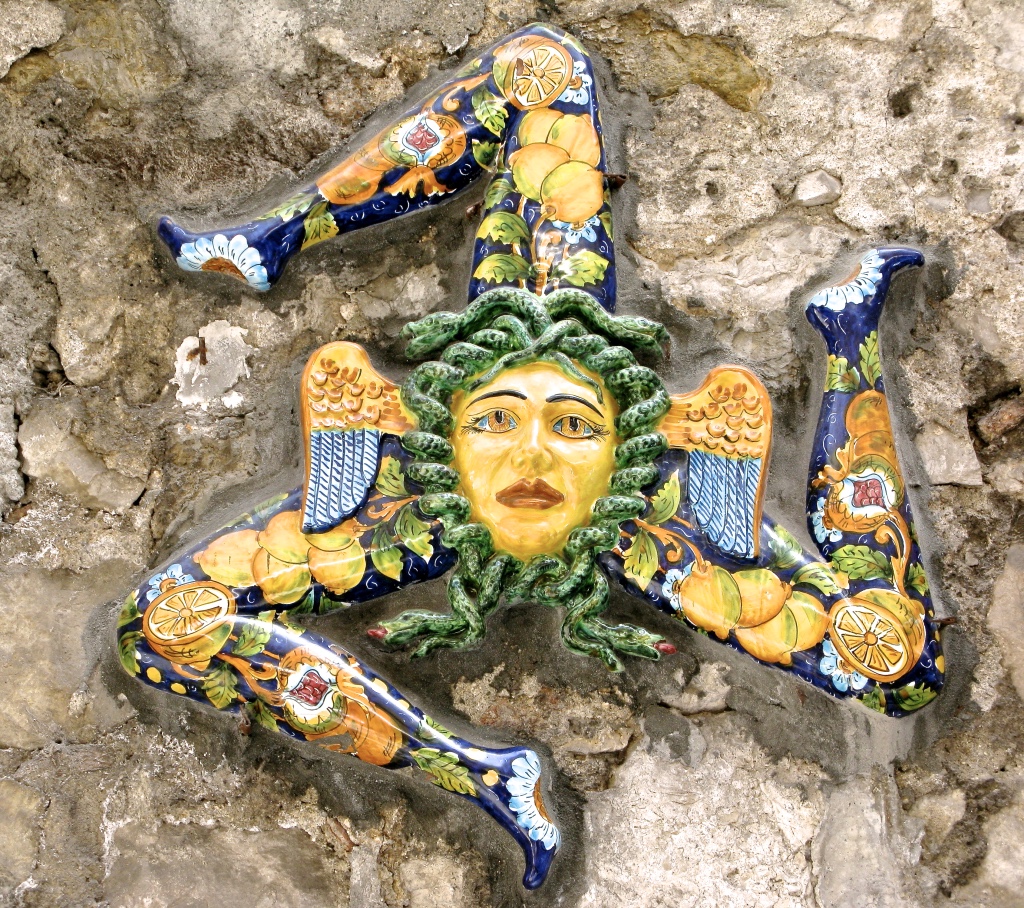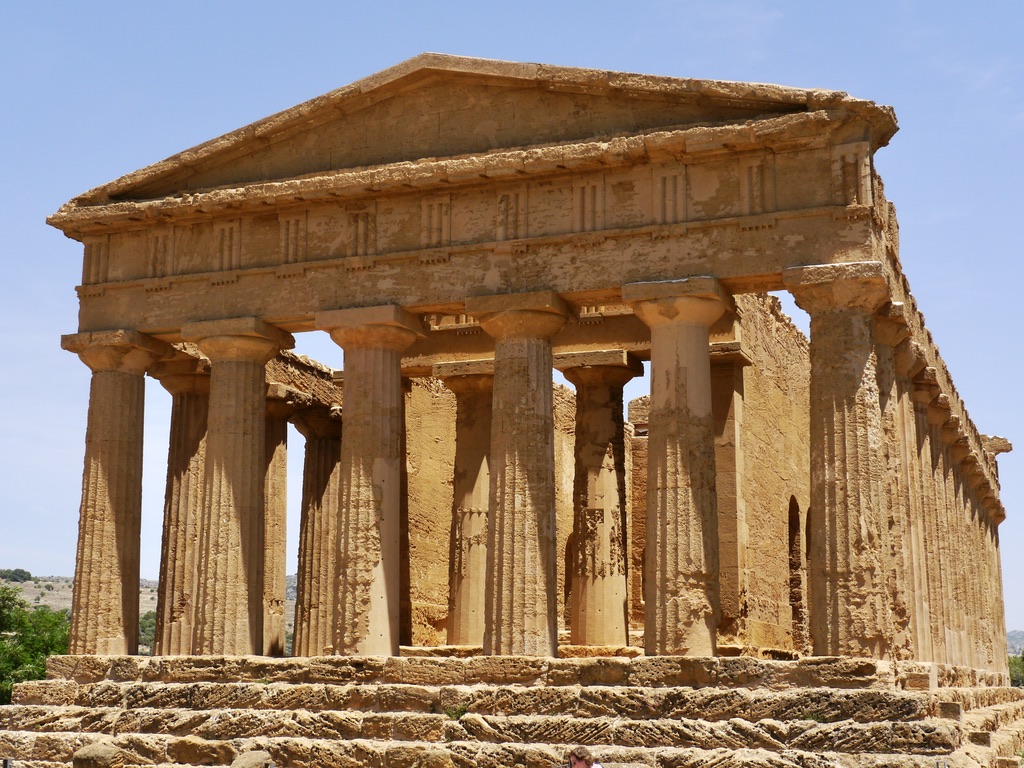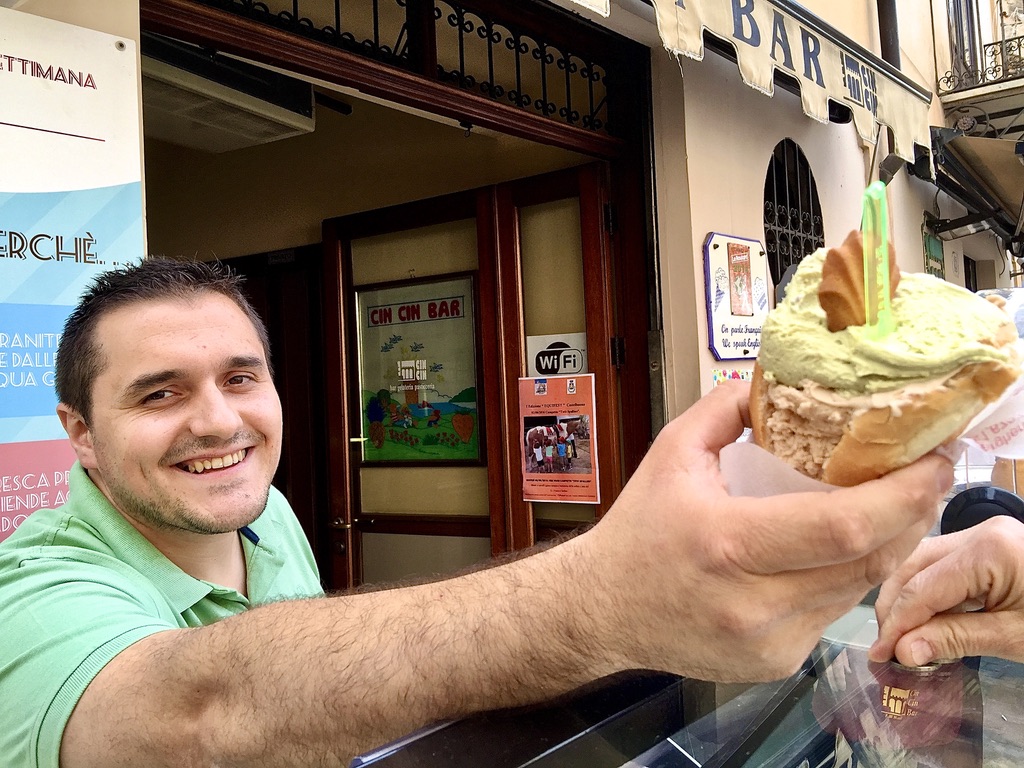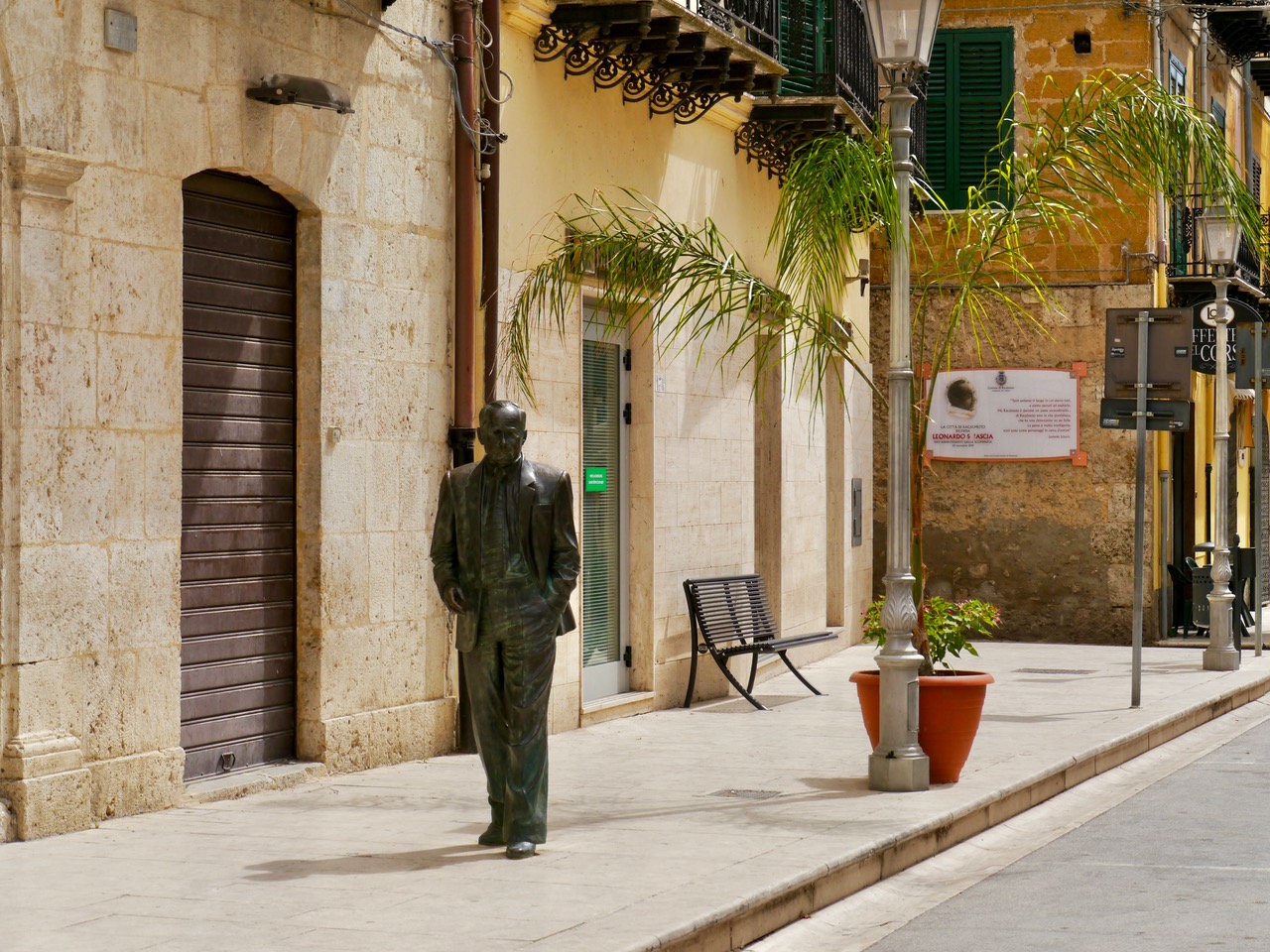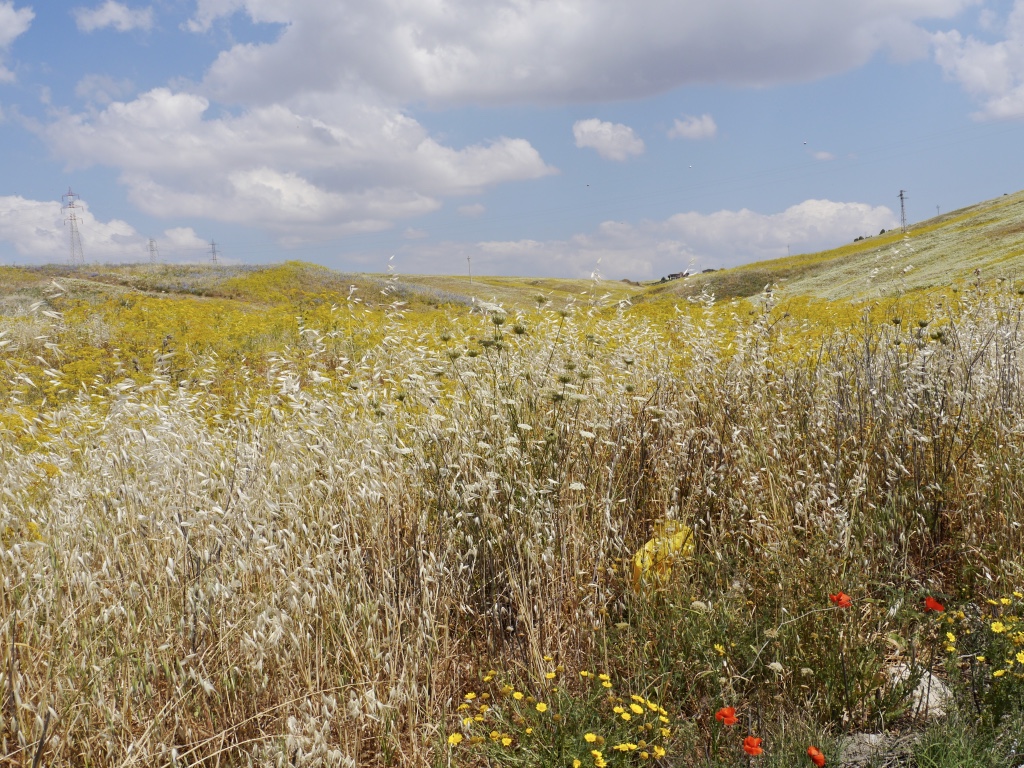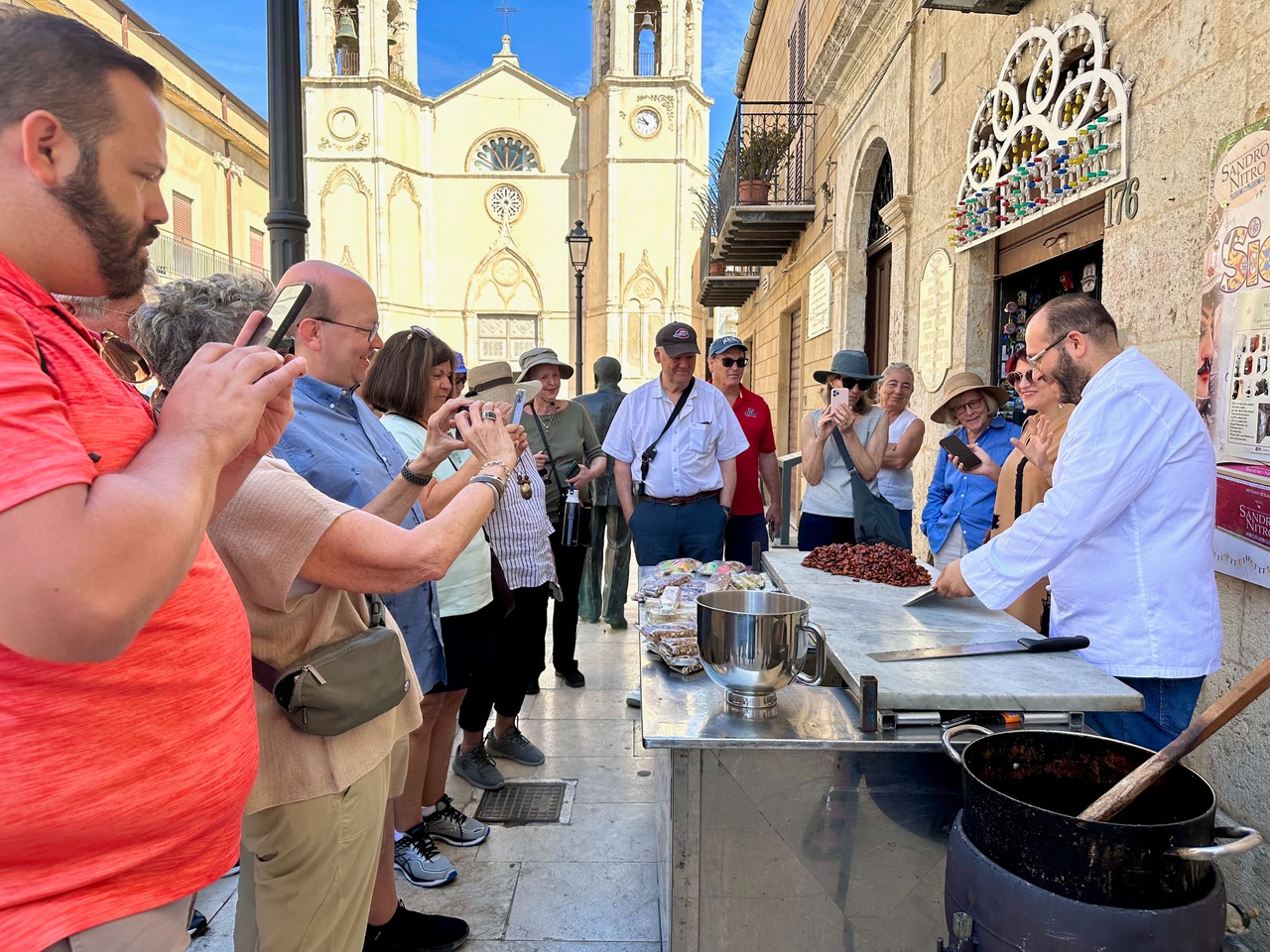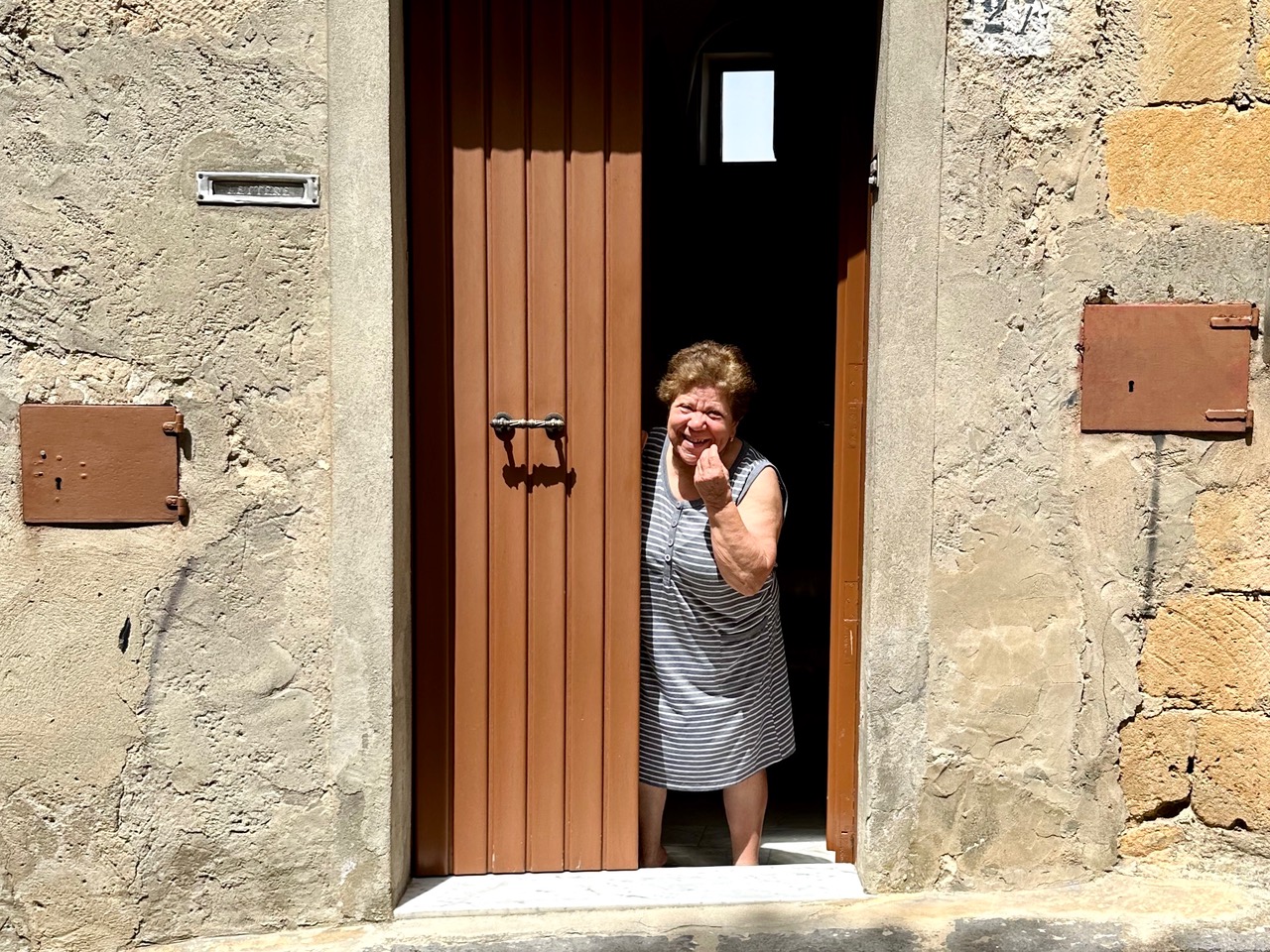When asked about her connection to Sicily, La RosaWorks Sicily Tours and Travel Founder Karen La Rosa holds up a wooden last her Sicilian great-grandfather used for making shoes.
She keeps it on her desk as a reminder of her heritage. Her family came from the southwestern part of the island, around the areas of Castelvetrano and Santa Margherita del Belice.
Growing up, she was always fascinated with the idea of Sicily and what she saw in the photos her family had around. But she'd never been there.
"We couldn't afford to go to Sicily on our honeymoon, and then we had kids," Karen remembers. "When I finally went, it was a real eye-opener."
That initial trip, a bike tour from Palermo to Agrigento, awakened something in her.
"I just felt like I was part of the ground," Karen says. "I felt like I belonged. I saw things I related to, and I couldn't even explain why."
She wanted to share that feeling with other people. When it came time for her to plan a trip with the New York Choral Society as membership chair, "It was sort of a no-brainer that we were going to go to Sicily."
Karen arranged a trip for 130 people that included touring and three concerts—something she calls "baptism by fire."
But while it was challenging, it started her on a new business journey. Word got out about the well-organized trip, and she started getting referrals.
Today, LaRosaWorks Sicily Tours and Travel hosts, designs, and arranges small group tours and bespoke experiences on both sides of Sicily. Karen seeks to highlight not only the wine and food but also the richness of the region's history and traditions. This led her to launch a trip to the Naples area, where guests can trace the roots of the Kingdom of the Two Sicilies, along with the ruins of Pompeii and the temples of Paestum.
Visit larosaworks.com, and you'll discover a wealth of Sicily travel resources. There's a lengthy page of books to add to your TBR list, ranging from history written by scholars, including Jacqueline Alio and Louis Mendola, to historical fiction by Stefania Auci and Carlo Treviso, and classics by Leonardo Sciascia and Giuseppe Tomasi di Lampedusa. She even features a primer on Sicilian grapes and pointers on driving in Sicily. And check out her list of music to build your Sicilian playlist.
Karen clearly has a passion that she seeks to spread to the rest of the world. She shared more about how she got here, what sets her tours apart, off-the-beaten-path destinations, and what she hopes guests take away.
What's your background, and how did it prepare you to plan and operate tours?
I majored in finance and art history and worked on Wall Street for a short period of time. The company is gone with the wind. It wasn't a battle I wanted to fight, and back then, that's what you had to do if you were a woman. As strong as I am, I just didn't want to go down that path. So, I went into the nonprofit world, where I felt more at home doing accounting and finance stuff.
When the kids were small, I left the day job and took up working on boards. I was president of an arts education board. I was on the board of a theater company for many years, and then ultimately, I joined the board of my kids' school to help them with their capital campaign to expand the school.
My kids were my priority, so doing it like that allowed me to be there for them when I needed to be. And with three boys, you need to be around!
Doing tours requires real organization. You can't be all over the place and do this. You have to be focused; you have to be committed.
We had a group of friends from my husband's college, and we started vacationing together. For 24 years, we vacationed together every year with a growing number of people. And I was the organizer because I was organized, because I was the one who was going to get it done, and get it done well. That's how I learned how to do this.
With the combination of being very organized and having some idea of how to create budgets, I think I was prepared to do this kind of work. Plus, you do need a passion.
La RosaTours itineraries include information about Sicily's symbols, like the trinacria.
What sets your tours apart from those of other companies?
Well, it's partly the hands-on stuff. Clients know I am there for them, and everything is done with my eyes and voice. I'm not interested in cutting corners. I'm also interested in sharing a broader approach to Sicily. If you're going to go, I'm going to immerse you. Here are the books you should read and the films you can watch. All my itineraries include information about what you should eat, what you should wear, what the flag means, and what that funny symbol you see all over Sicily is.
I want to give them some idea of what Sicily is about. It's special, and it's still in a stage of its tourist development that is not all manicured like Northern Italy. Almost to a person, people return to say, "I had no idea!"
Temple of Concordia in Agrigento
You emphasize that you have tours to both sides of Sicily. Why is that important?
Because they are different. The eastern side of the island favors more of the Greek history, and because it was visited more often for a longer period, it's also more tourist-ready. The west side, to me, is a gift. It's still so under-visited, it's equally beautiful, with so much to see.
I've had many clients who have come with me on the eastern side and then come back to go on the western side. Everybody remarks that it's a different atmosphere, it's a different feeling.
I'm a believer in the need to be responsible as tourist leaders. I try to go off the beaten path.
I did a tour up to Northern Sicily. We started in Catania, went across the northern part of the island, and finished in Palermo. We visited the Nebrodi. I don't know of any other tour by any other company that visits that area. At first, I thought, I hope I'm able to sell this. But, again, I had repeat clients, and they loved it because we saw new views, tasted local foods, and visited small villages that had so much to offer, including local people who wanted to share. It's just very different. The Nebrodi are different from the Madonie. They look different; they feel different; the wine is different. So you try different things. Everyone loved it.
I have a tour for September that I call the Beating Heart of Sicily Tour, which will basically go from Palermo to Catania through the middle interior. There are always highlights and important visits but I continually try to visit places where we will be immersed and apart from other tourists.
Gelato in Castelbuono
What other off-the-beaten-path experiences do you offer?
In the north, one of my favorite little towns is Castelbuono. Most people will go to Cefalù and go no further.
Castelbuono is a gem. In its 14th-century castle, it has one of the artist Serpotta's most amazing chapels. It also has a contemporary art museum that's really astonishing, inside that same castle! It has some beautifully preserved frescoes in the mother church. It's also the home of the Fiasconaro brothers, who make the famous panettone. They always have tables out for you to taste different things. The town is such a charming place to walk around, and for a small town, it's got several very good restaurants thanks to its location in the Madonie Mountains.
Learn about writer Leonardo Sciascia in Racalmuto.
Another place is a town called Racalmuto, about an hour north of Agrigento. It's where Leonardo Sciascia comes from. He was Sicily's most important 20th-century writer, political activist, and playwright.
In typical Sicilian fashion, the government does not fund the place where he lived. They get no money, and it's opened only by appointment. A private citizen keeps it, which is just astonishing. And it looks like Sciascia just left, almost as if there were still cigarette ashes in the ashtray.
It's a wonderful place to visit because, for a small town, there is a lot to see. There is one of the typical theaters of the late 19th century that were opened all over Sicily in an effort to bring culture to the masses. They are small jewel box theaters made in a fashion similar to the Teatro Massimo in Palermo, and they are beautiful to see. There is a castle that is now a museum and visitor center, and a wonderful permanent exhibit by a local artist whom I've met. They have sweets particular to this town. There are two places we go to watch them make these sweets and taste them.
The Sicani Hills near Sant'Angelo Muxaro
I do another day with another guide, which is also fabulous. He grew up in this town, Sant'Angelo Muxaro, in the Sicani Hills. He introduces us to the townspeople and takes us to see the old and the new. He sings for us—the song they sing during the procession on their big feast day. The locals open their doors for us, feed us at the old bakery in the old style, and we learn about life in a small hilltop town, remote from so much.
Sandro demonstrates making caubaita (almond nougat) in Racalmuto.
When you go with guides—and I really believe in guides—not only do they open your eyes to the historical things you're seeing, but you're with people who live in Sicily, who grew up there, and understand the place. They're all very knowledgeable and licensed, and the conversations go many places when clients ask questions. That's part of the immersive experience. I always try to include guides. They're all really special people, mostly archeologists, art historians, sommeliers, naturalists—really top-tier people that 16 years of experience have brought me to. They make the days and activities terrific.
Tell us about your Kingdom of the Two Sicilies Tour.
A client of mine who's been to Sicily three times asked me to do something different. Naples was that. I read Antoinette's Sister by Diana Giovinazzo, which I loved. Of course, Lou Mendola has written about this period a lot. And I've seen a couple of films that intrigued me. I thought it would be a very interesting thing to do. All but one person on the tour is a repeat client.
We'll spend half the time in the area around Paestum. We're going to visit a cheesemaker and a white fig producer. And we're going to the ruins. We'll do a cooking class and go to some small villages. (I always try to vary the itineraries so you see many different facets of the place.)
Then we'll go to Naples and spend two full days there doing city things. We'll go to Caserta, where the Royal Palace is, Capodimonte for the incredible art collection, and Pompeii, of course. There will be winery visits and fried pizza, a local specialty.
A new friend in Randazzo
At the end of a tour, what do you hope participants take away?
The generosity and hospitality in Sicily are legendary, and it is a richness that I haven't found in too many other places. Whenever I'm flying home, I always stray to the same thoughts: Sicily has been coveted and conquered by everybody. Many of those people came to take things away from them, but they also left a bevy of material and immaterial things that are today part of Sicilian culture. Sicilians are a real mix of everyone who has ever come ashore.
Maybe that's one reason they have strong family values and why they care for people. It's a nucleus of which they have control. People come first.
Walking through a small village once, an older woman saw our little group. She stopped to talk, and hearing we were visitors, she took out the bag of cookies she had just purchased and gave them to us, smiling as we enjoyed them.
I also never feel the culture and pressure of "more" that I feel in America—more cars, more computers, more money. They value the land and tradition, and taking care of what they've been given in modern ways is a main focus. They're very concerned with climate change and sustainability. The land and its fertility are so important to them.
I could go on and on, but in short, I hope people leave Sicily having seen the history, beauty, and richness with their own eyes and having felt the generosity and hospitality of the people we meet along the way. I also hope they leave with a feeling of the real humanity in Sicily, with an appreciation for the effort and sometimes sacrifices it takes to be committed to their traditions, the land, and these values. I think there is something to learn there. And I think that's marvelous.
If you enjoyed this article, consider subscribing to my newsletter for more content and updates!

